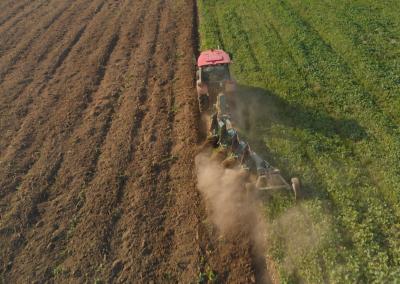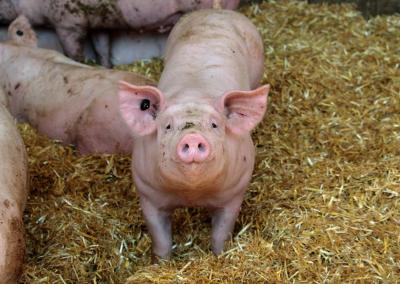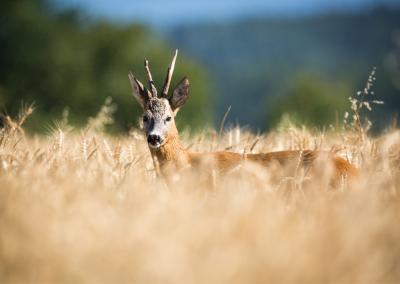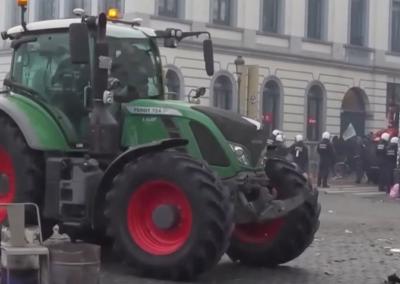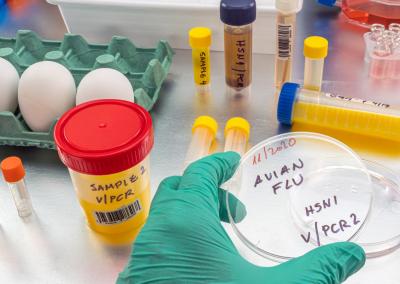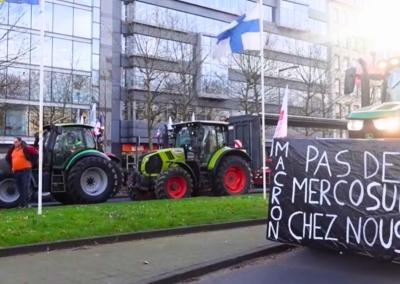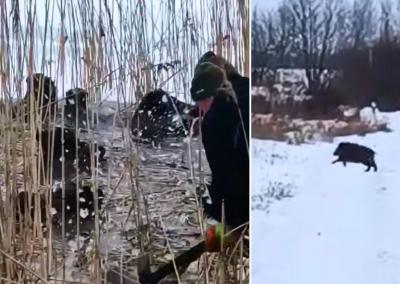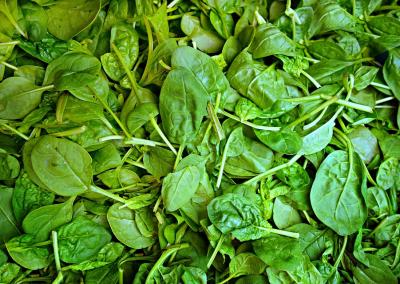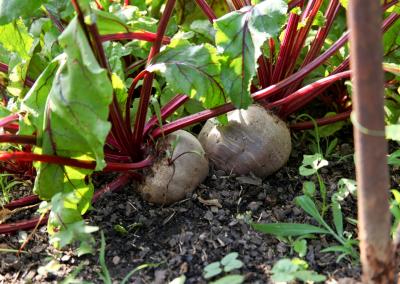Growing potatoes under straw
Growing potatoes under layers of weeds or soil, planting seed potatoes on the surface of the ground instead of in the ground, is very useful if the soil on the plot is unsuitable for growing potatoes. Or when the plot owner rarely visits the garden, or simply does not want to spend the weekend hunched over the beds, when health prevents the spine from straining, or when there are not enough tools to work the land. Potatoes under &scaron can then make life easier and easier to harvest than if they were grown in the traditional way.
The specifics of the &scaron potato method are suitable for most climatic zones and soils, although there are variations. Sometimes growing potatoes under a layer of &scaron or &scaron or weeds has its disadvantages and its subtleties, but once you know them, it is relatively easy to circumvent the difficulties and get a good yield.
Potato cultivation under &scaron – from autumn onwards
The point is that the potato planting method makes digging and loosening the soil unnecessary. On uncultivated land, it is sufficient to clear the surface of the soil of weeds in the autumn.Išweed stems, raked autumn leaves, bullweed, dead grass – all can be used in the autumn to prepare the area for spring potato planting. The area can also be sown in autumn with green manures - siderates. Mustard, lucerne, oats, rye, rape, phacelia will be excellent precursors for arable crops and will help to control weeds.
Dried plants and their remains turn into &scaron and &scaron weeds. From autumn and throughout the winter until spring, living processes take place inside the &scaron layer - rotting, decomposing, turning into organic fertiliser &scaron. After overwintering under the snow, the &scaron layer and the underlying soil become a very fertile substrate. This is what will be used for sowing potatoes in spring.
Planting potatoes under &scaron in spring
We would like to warn you right away that there are many options for growing potatoes under &scaron. For example, some gardeners use one technique for early potato varieties and another for medium varieties. Some plant the tubers šachmatically, others – simply in rows and others – in stacks. Some use sprouted potatoes for planting, others use unsprouted potatoes. In this article we have chosen the simplest possible cultivation option, the "golden mean", which is suitable for most varieties. Perhaps you know of another method for potatoes under &scaron and it is different from the one we have described? We do not claim to have the "most correct" opinion.
When the soil reaches 10-13°C (depending on the grace of nature), from 20 April to mid-May, it is possible to start planting potato seeds under the &scaron.
The area to be planted with potatoes should ideally be well watered. If desired, the substrate layer of last year's grasses can be reseeded with &scaron eyes. This is easy to do, as it is a light layer of plant residues, not soil.
If you are using sprouted potatoes, then place them in a row, 25-30 cm apart, in a mesh. The distance between rows is 60-70 cm.
After planting, sprinkle the areas around the potatoes with tree ash (30 g per &scaron). The potato rows can be well watered.
Next step – cover the planted potatoes with &scaron &&scaron &&scaron &&scaron &&scaron &&scaron &ear. Use only šold šold šold šold šold. The best thickness of the weft layer is 30-50 cm. If weeds are used instead of &scaron, then it is recommended to lay a layer of &scaron of 20-25 cm on the potatoes first, and then add another 15-20 cm of &scaron when the potatoes have sprouted. This is because the &scaron is denser and rolls up more quickly, and the potato seedlings may drift towards the &scaron, rather than in a straight line, under the weight of the &scaron.
If there is a lack of &scaron and &scaron, it is useful to cover the planted potatoes with a small layer of soil (5-10 cm). Or, if there is no soil available, simply plant the potatoes in small holes rather than on the surface of the ground.To prevent wind gusts from blowing the potatoes away, make lightweight carvings from sticks or plastic tubing. Use the rafters to press down the weft layer. A net on the frame around the potato bed also helps.
Maintenance of potatoes under &scaron
Usually, the sky itself waters during all stages of growth. However, if it does not rain for a long time, the potatoes will need regular watering. Especially 1 month after planting, once the flowers have formed.Putting your hand under the &scaron layer can be used to check if overdrying has occurred. Underneath the &scaron should be &scaron and moist, but not hot and not too dry.
Only the most stubborn and easily controlled individual weeds can penetrate the mulch layer of the weeds. There is no crusting of the ground under the &scaron weed, and you will only have to cut back the &scaron weed if it was low to begin with or if the top layer has been blown away by the wind.
Harvesting &scaron after &scaron
The first harvest of young potatoes can start 3 months after planting. We won't call it a potato harvest because it is not digging under the ground. There is another pleasant surprise for the šmethod šgrowers – you don't have to take all the šacnia fruit at once. It is enough to carefully pick the largest tubers from underneath the &scaron layer and leave the remaining smaller ones there for full ripening and later harvesting.
When the time comes for the final harvest of the whole potato crop, there is no need for a spade. Simply rake the &scaron layer into the &scaron layer and collect the dry and smooth potato tubers from the ground. Do not throw away the &scaron layer, but store it and set it aside until the next potato planting next year. The rotten &scaron can be incorporated into the soil to plant another batch of green siderates.
Planting under the &scaron weft protects the potatoes from the larvae of the potato leafhopper, but unfortunately not from Colorado potato beetles. Leafhoppers and their larvae avoid &scaron weft.
The Šia layer is a nuisance – it is inhabited by mice. And strong gusts of wind blow away the weevils, thinning the layer. Underneath the thinned layer of &scaron, the potatoes start to turn green due to the &scaron's wind penetration, which stimulates the formation of solanine in the tubers, which is harmful to the human organism. Therefore, the integrity of the tissue layer needs to be monitored more frequently.


